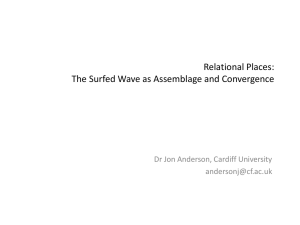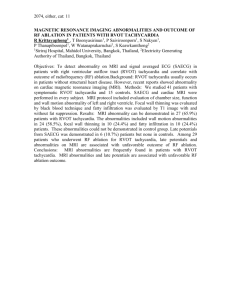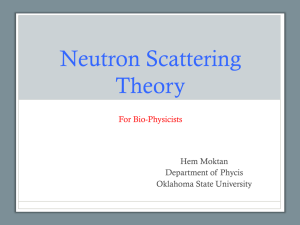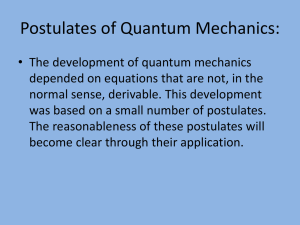T wave abnormalities
advertisement
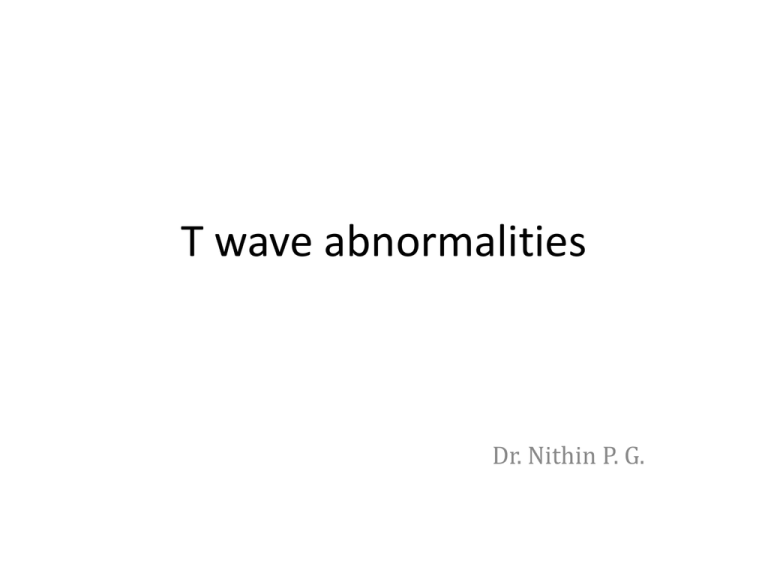
T wave abnormalities Dr. Nithin P. G. Post extrasystolic • First postextrasystolic complex [sometimes second or third] show occasional primary T wave changes [T wave inversion with prolongation of the QT interval] • Cause unknown- Asynchronous repolarization during adjustment to a new cycle length Postextrasystolic T wave inversion • More frequently in patients with heart disease Macfarlane et al, Electrocardiography- comprehensive clinical cardiology , Springer 2012 edition. Post-tachycardia “In about 20 % of pts with paroxysmal tachycardia, the normal upright T wave becomes inverted for hours or days after termination of the episode or interruption of tachycardia by ablation. This may occur after VT or SVT and is unrelated to the age of the patient or to the presence or absence of heart disease.” Macfarlane et al, Electrocardiography- comprehensive clinical cardiology , Springer 2012 edition. [2 days] [10 days] [17 days] Baseline normal PSVT N Engl J Med 1995; 332:161 Post-tachycardia “ The abnormalities often persist longer than would be expected on the basis of physiologic adjustment to the new cycle…. …..the mechanism is probably similar to that of the post-pacing, postLBBB, and post-preexcitation abnormalities.” Macfarlane et al, Electrocardiography- comprehensive clinical cardiology , Springer 2012 edition. Post pacing Surawicz B, Knilans TK. Chou’s Electrocardiography in Clinical Practice. 6th Edition. Saunders Elsevier 2008 • a Duration of pacing and the amount of energy applied during pacing • Site of stimulation determines the vector of the T wave • “presence of abnormal depolarization in the stimulated area” Post pacing After intermittent preexcitation Pre-ablation Day 40 ablation Day 1 ablation J Cardiovasc Electrophysiol 7:51, 1996 After intermittent LBBB American Journal of Emergency Medicine (2010) 28, 747.e5–747.e6 Transient T wave abnormalities Cardiac memory (Rosenbaum et al. 1982)/ electrical remodeling - Primary T wave abnormalities following normalization of intra-ventricular conduction only gradually disappear – “AP prolongation over the preexcited area” -they persist – Manifestation of repolarization “memory.” [abnormal sequence of activation is “remembered” for some time after return to a normal activation pattern] Phase 2&3 Phase 1 Phase 2&3 Thank you






